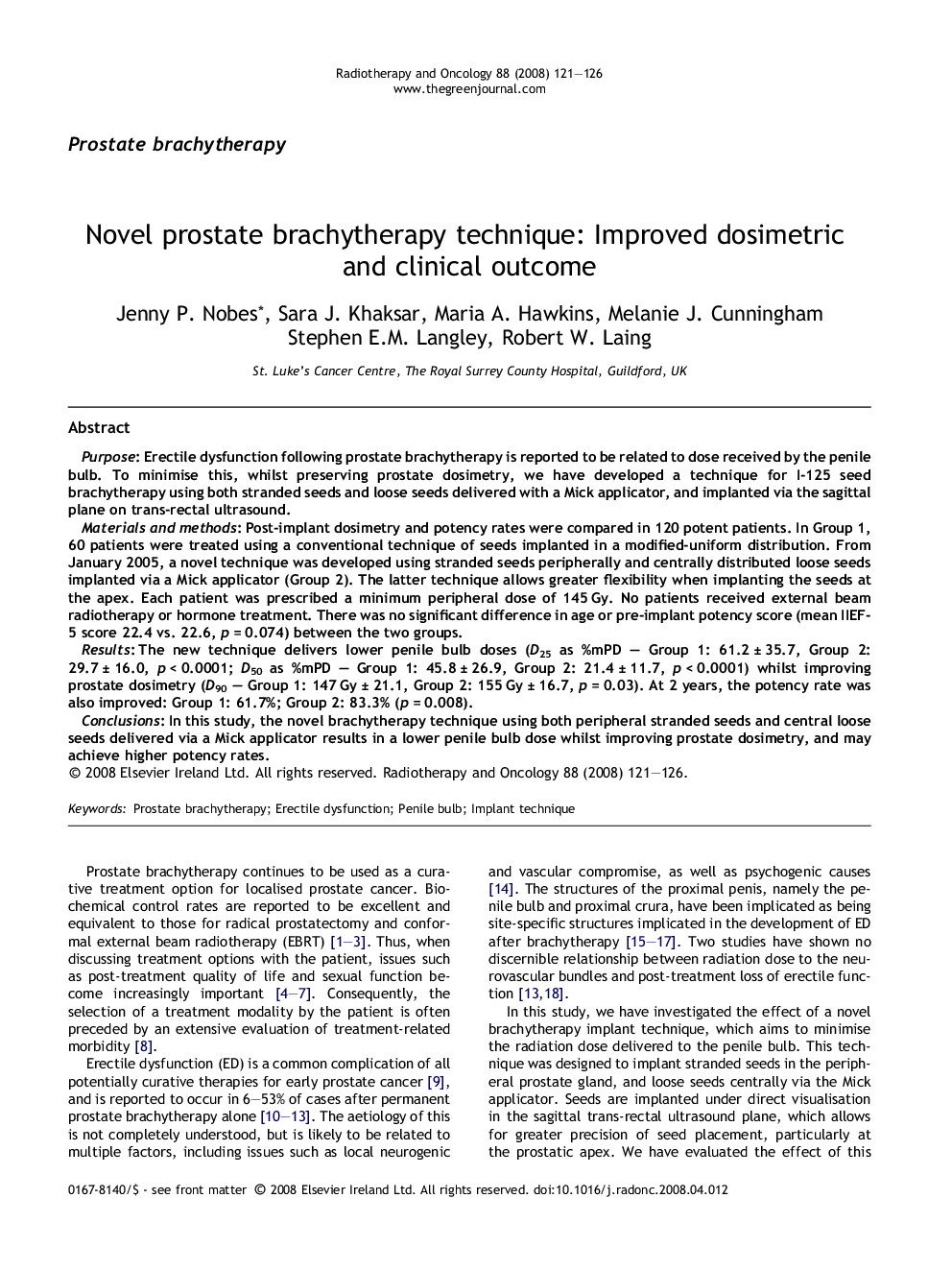| Article ID | Journal | Published Year | Pages | File Type |
|---|---|---|---|---|
| 2160232 | Radiotherapy and Oncology | 2008 | 6 Pages |
PurposeErectile dysfunction following prostate brachytherapy is reported to be related to dose received by the penile bulb. To minimise this, whilst preserving prostate dosimetry, we have developed a technique for I-125 seed brachytherapy using both stranded seeds and loose seeds delivered with a Mick applicator, and implanted via the sagittal plane on trans-rectal ultrasound.Materials and methodsPost-implant dosimetry and potency rates were compared in 120 potent patients. In Group 1, 60 patients were treated using a conventional technique of seeds implanted in a modified-uniform distribution. From January 2005, a novel technique was developed using stranded seeds peripherally and centrally distributed loose seeds implanted via a Mick applicator (Group 2). The latter technique allows greater flexibility when implanting the seeds at the apex. Each patient was prescribed a minimum peripheral dose of 145 Gy. No patients received external beam radiotherapy or hormone treatment. There was no significant difference in age or pre-implant potency score (mean IIEF-5 score 22.4 vs. 22.6, p = 0.074) between the two groups.ResultsThe new technique delivers lower penile bulb doses (D25 as %mPD – Group 1: 61.2 ± 35.7, Group 2: 29.7 ± 16.0, p < 0.0001; D50 as %mPD – Group 1: 45.8 ± 26.9, Group 2: 21.4 ± 11.7, p < 0.0001) whilst improving prostate dosimetry (D90 – Group 1: 147 Gy ± 21.1, Group 2: 155 Gy ± 16.7, p = 0.03). At 2 years, the potency rate was also improved: Group 1: 61.7%; Group 2: 83.3% (p = 0.008).ConclusionsIn this study, the novel brachytherapy technique using both peripheral stranded seeds and central loose seeds delivered via a Mick applicator results in a lower penile bulb dose whilst improving prostate dosimetry, and may achieve higher potency rates.
